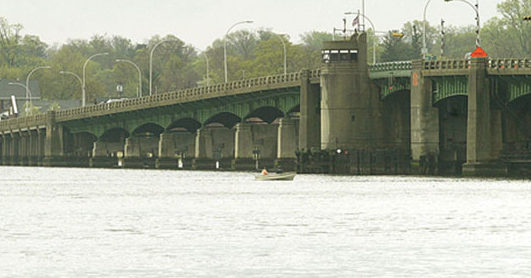By STEVEN VIERA
Staff Writer
RUMSON — Representatives of New Jersey’s Department of Environmental Protection (DEP), Rutgers University, Montclair State University and other organizations joined members of the community to rally for the Navesink River.
Clean Ocean Action, a Highlands-based nonprofit that is dedicated to improving water quality along the coasts of New Jersey and New York, served as the host to a public meeting on Aug. 11 at the First Presbyterian Church to discuss the status of clinging jellyfish in local waterways and review recent tests on water samples from the Navesink River.
In 2015, the DEP degraded 565 acres of the Navesink as unsuitable for shellfishing, which prompted Clean Ocean Action to study water quality and potential sources of pollution as well as organize the Rally for the Navesink, an alliance of organizations that supports the environment and activities on the river.
“The most important aspect of the program is that it’s a grassroots, no-blame-game, find-it, fix-it citizen action plan,” Executive Director of Clean Ocean Action Cindy Zipf said.
The first public meeting of the Rally for the Navesink, held on June 28, focused on a report by Clean Ocean Action that identified fecal coliform bacteria and non-point sources (NPS) of pollution as a major problem for the health of the river.
At the Aug. 11 meeting, experts discussed testing and sampling conducted to further study water quality and sources of pollution, and Dr. Paul Bologna, a professor at Montclair State University, talked about the appearance of clinging jellyfish in the Shrewsbury River and other nearby bodies of water.
“Jellyfish, in particular, have one unique feature — they don’t need a lot of oxygen,” he said, and he pointed out that because jellyfish are not adversely affected by poor water quality, they often “win by default” and survive in areas where other marine life could not.
Clinging jellyfish, Bologna explained, are an invasive species that experienced a population boom in the Shrewsbury River in May and June and are much more dangerous than their appearance might suggest.
“They’ve got a really toxic little punch, and they’re going to send you to the hospital,” he said, adding that clinging jellyfish can cause symptoms from extreme pain to cognitive impairment.
According to Bologna, the clinging jellyfish have vanished, which he attributes to the fact that sea nettles — another type of jellyfish — prey on them. In the future, however, clinging jellyfish may return if some of their polyps survived on the riverbed, he said.
Other speakers included Bob Schuster, chief of the DEP’s Bureau of Water Monitoring, and Dr. Nicole Fahrenfeld, an assistant professor at Rutgers, who explained the results of recent surveys that evaluated sources and levels of pollution in the Navesink during both wet and dry weather conditions.
Additionally, Clean Ocean Action sent eight samples from the Navesink to Environmental Canine Services, an agency that uses trained sniffing dogs to detect sources of pollution.
Clean Ocean Action’s Coastal and Ocean Policy Attorney Zach Lees said that two dogs sniffed all the samples — both had a reaction to five of the eight samples, and they had a mixed reaction to two, which indicates the presence of human sources of pollution in the water. Only one sample did not illicit a reaction from either dog.
To close the meeting, representatives from Clean Ocean Action described what citizens can do to help rally for the Navesink, such as serving as a liaison to a community organization, participating in Clean Ocean Action’s “Beach Sweeps” and more.
“We are creating a new paradigm of how you solve a problem within a watershed, and the paradigm is that we, the people, lead and push our elected officials and our state officials to implement what they can do under the regulatory tools that they have, but we as citizens can do so much as well,” Zipf said.
Clean Ocean Action will hold another Rally for the Navesink meeting in September.

